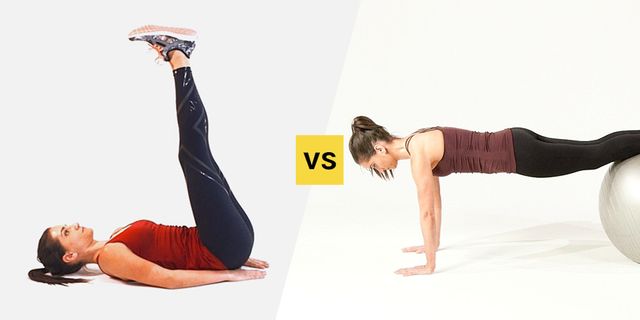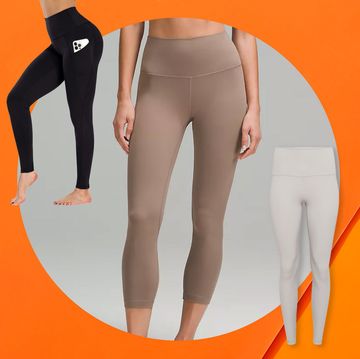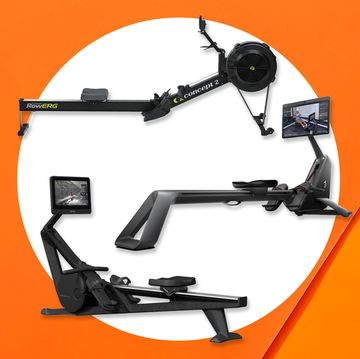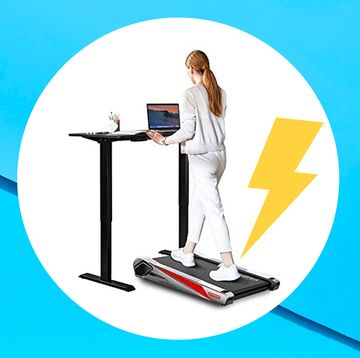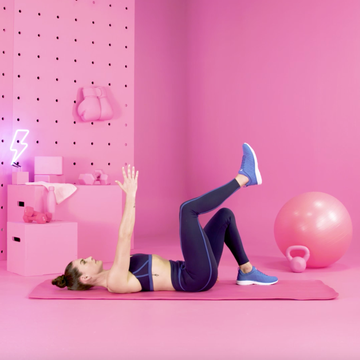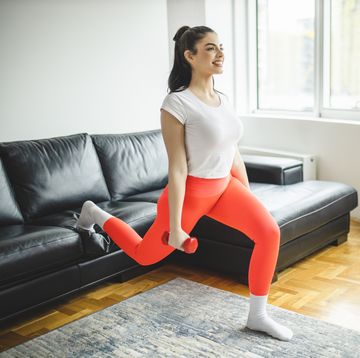Whether you’re aiming for a rock-solid core, a legit six-pack, or a flat stomach—targeting your lower abs is crucial. Your body stores the most fat in this part of your belly, and while there's no such thing as spot-training, those hard-to-hit lower abs are the foundation of real core strength and back pain relief.
Two popular lower abs moves are the stability ball knee tuck and lying leg raise. But which one really gets to those hard-to-reach muscles?
In reality, both these moves will light up your lower abs, says Darin Hulslander, C.S.C.S., owner of This Is Performance personal training in Chicago. But the stability ball knee tuck edges ahead just slightly because it provides a little more activation of the lower abdominals and put less strain on your back, he adds.
“During the leg lift, the psoas, quads, and other muscles of the hip flexors are the primary movers of the leg raising, while the lower abdominals are secondary," Hulslander explains. "Because they are intertwined in the pelvis area, you will see some lower abs activation, but not to the level that you’ll see from the knee tucks.” Plus, with the leg lifts, you risk stressing your low back if you aren’t yet strong enough to keep it flat on the ground, even if your hands are under your butt for stabilization.
On the stability ball knee tucks, you activate the lower abs from essentially holding plank on a ball. But on top of that, you’re scoring extra abs activation by pulling the ball in, as well as the extra resistance of controlling it as it goes back. This is known as anti-extension, and it's "a critical movement for core strength and should be included in everyone’s program,” says Hulslander.
On top of working your lower abs, this move also improves hip flexion—great for weak hips and increasing squat depth—as well as shoulder stability, which will help improve your posture.
The only problem: “Often people’s shoulders will get tired on the knee tucks and sometimes they’ll drop their hips, which can lead to low back extension and/or pain,” Hulslander notes. If this starts to happen, forget the tuck and try just walking your hands slightly backward and then forward in plank, mimicking a saw motion with your feet still on the ball, to build up that core strength.
Here's how to do each move for yourself:
Stability Ball Knee Tuck
How to: Assume a pushup position with your shins resting on a Swiss ball. Keeping your lower back straight, tuck your knees to roll the ball toward your chest. Pause, then return the ball to starting position. That's one rep.
Lying Leg Raise
How to: Lie on your back with your palms facing down. Slowly lift your legs to a 90-degree angle, keeping them straight. Pause, then lower your legs back down. That's one rep.
